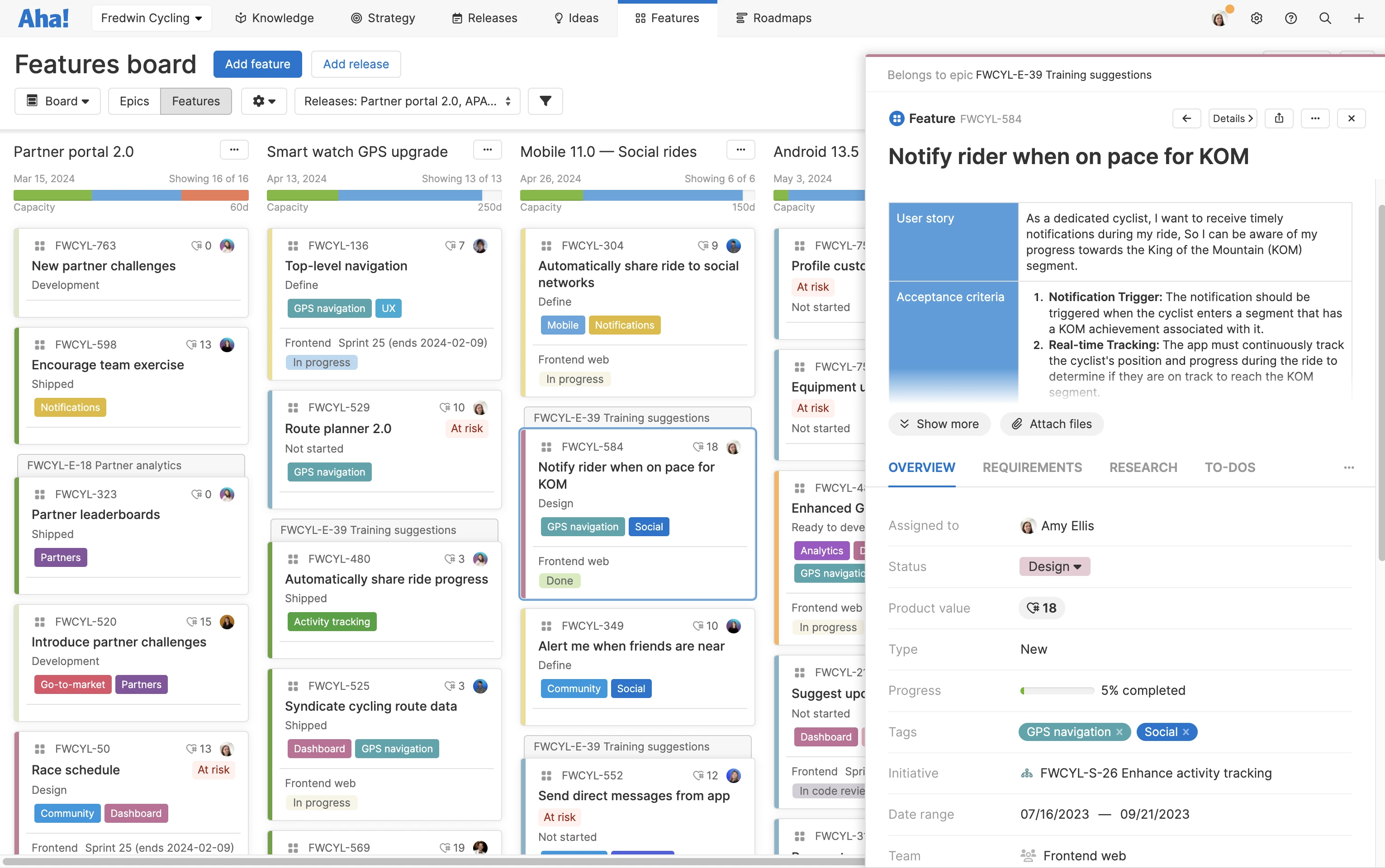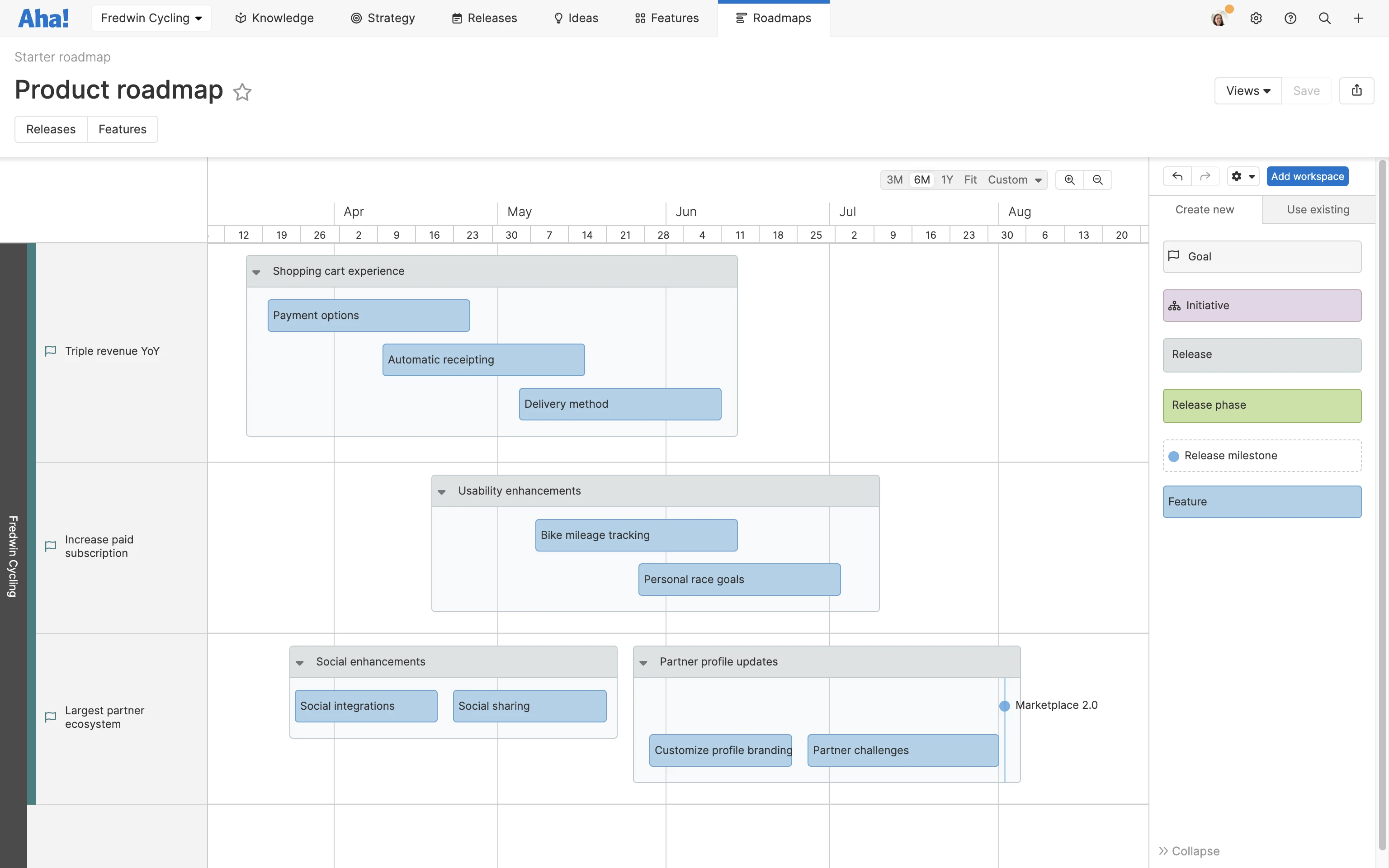What is the role of a product manager in scrum?
Delivering lovable products is a true collaborative effort that involves teams across an organization. Product and engineering are two of those teams that work closely together — with great help from other teams like user experience (UX) and product marketing — to thoroughly consider the customer experience. The product team prioritizes what to build while the engineering team determines the features they can commit to and how to build them. Teammates rely on product owners and product managers to help propel new ideas through to completion.
Each of these roles has distinct responsibilities in scrum. This guide provides an overview of the role of the product manager — who ensures that the cross-functional team's work aligns with the product vision as well as customer needs.
Skip ahead here:
What is scrum?
First things first. What is scrum? Many teams follow agile software development methodologies which encourage an iterative approach to product planning and implementation. Agile teams adapt to feedback in order to deliver incremental value to customers. Scrum is the most widely used agile methodology for managing software products and application development.
In scrum, self-organizing teams are responsible for managing and completing work within specified periods of time called sprints — which are typically one to four weeks. Teams aim to consistently deliver value at a sustainable pace by following a defined framework. As such, scrum includes its own set of roles, concepts, and vocabulary that lend structure to the product development process.
Related: What is scrum?
Scrum roles
Scrum defines three roles that are integral to the framework: scrum master, product owner, and development team. It is important to understand that these are roles rather than job titles. For instance, what if you only have a product manager on your team? In this case, the product manager would act as the product owner in a scrum environment.
Scrum master | The coach that helps keep the team accountable to their commitments to the business and also remove any roadblocks that might impede the team's productivity. |
Development team | The team that drives the plan for each sprint and completes the work. They forecast and commit to how much work they can complete in each sprint using their previous velocity and capacity as a guide. |
Product owner | The owner of the product vision. They are focused on understanding business, customer, and market requirements — then prioritizing the work to be done by the development team. |
Although scrum prescribes these three roles, many organizations bolster their scrum teams with additional roles, such as:
Agile mentors: People with experience facilitating agile development who can share their experience with the team.
Stakeholders: People external to the scrum team with a specific interest in and knowledge of the product that is used for discovery and feedback.
Business owner: Often the lead stakeholder of one or more scrum teams in a large organization.
Subject matter experts: People external to the scrum team with specialized knowledge or skills who can fill any knowledge gaps and advise the team.
Product owner vs. product manager in scrum
It can be confusing to tease out the differences between a product manager and product owner. Product managers often act as product owners on scrum teams. In a scenario where both roles exist, product owners focus on internal responsibilities — like backlog maintenance per the standard scrum methodology. And the product manager focuses on external responsibilities — like market and customer research and roadmap presentations.
Product owners focus on establishing and representing the voice of the customer. They stand in as proxies for customers during discussions of backlog prioritization and requirements. Product owners dedicate a lot of their time to writing user stories, facilitating work estimations, and coordinating external validation of the team's work.
Critically, product owners take responsibility for accepting completed user stories according to each team's particular definition of done. They are expected to be available at all times to share their insight and they actively participate in sprint planning and sprint review sessions.
If a product manager is tasked with serving as the product owner on a scrum team, they will need to complete all of the duties associated with that role as well as their product management work. That typically means managing the strategic vision for a product and keeping cross-functional teams on track and on deadline. Product managers prioritize work to be done, build and share roadmaps across teams, and incorporate feedback from internal and external sources.
It can be hard to manage both product owner and product manager roles, especially if you are expected to juggle the needs of internal and external stakeholders. Remember that the product owner on a scrum team does not always need to be the product manager. Sometimes it is best to delegate product owner responsibilities to someone else on the scrum team who has the required product expertise (and the available bandwidth) to take on this additional role.
Ultimately, product managers validate that their team is building the right thing across every phase of development. Without this focus on validation, it is easy for teams to get off track and follow development paths that end up leading to dead ends. Product managers are highly skilled at applying strategic vision to the details of work across a development timeline. Consequently, the best product owners tend to have a background in product management.
Scrum concepts
Successfully navigating a scrum environment as a product manager requires that you understand scrum concepts and how each impacts planning and development. You will need to be fluent in scrum terminology and the concepts that drive scrum development.
The table below provides definitions for key scrum concepts:
Epic | Epics are an agile element for large efforts of work that can be broken down into smaller user stories. An epic typically takes more than one sprint to complete. |
Estimate | Estimates are quantified evaluations of the effort necessary to carry out a given development task. This is most often expressed in units of time or story points. |
Product backlog | A product backlog is a scrum artifact, managed by the product manager. It is a list of all the work you want to implement but have not yet prioritized for release. |
Product increment | A product increment is another scrum artifact. It is the sum of all the product backlog items completed during a sprint. Increments must meet the development team's definition of done and be a useable product. |
Sprint backlog | A sprint backlog is another scrum artifact, managed by the engineering team. It is a list of user stories that need to be completed during an iteration. |
Sprint | A sprint is the actual time period when the scrum team works together to finish an increment. This typically ranges from one to four weeks. |
Theme | Themes are an organizational tool that allows you to group or label backlog items, epics, and initiatives to understand what work contributes to specific organizational goals. |
Timebox | A timebox is a fixed, maximum unit of time for an activity. Scrum masters use timeboxes to keep ceremonies efficient and facilitate smooth-flowing collaboration. |
User story | User stories are the smallest units of work in the scrum framework. They are an end goal expressed from the user's perspective. User stories make up the sprint backlog. |
Velocity | Velocity is the amount of work a team can accomplish during a period of time. Velocity is commonly used in agile development to calculate how much work a team can complete during a sprint. |
Benefits of the scrum methodology
Scrum recognizes that, during a project, product managers and customers may change their minds about what they want and need. Additionally, technical challenges cannot always be predicted at the beginning of a development cycle. Scrum promotes a flexible approach to manage shifting priorities and contend with unforeseen challenges.
Here are some of the key benefits of the scrum methodology's flexible approach:
The near-term roadmap can continually be adjusted to meet customer needs.
Rapid iteration allows product managers to learn and act on feedback quickly. You can revise backlog priority before the next sprint or release without significant wasted effort.
There is a shippable product every sprint. This means you can deliver value to users each release.
Scrum is a great choice if you need to help your teams quickly deliver features, updates, and entire products while constantly addressing customer needs and wants.
Scrum tools
As you have learned in this guide, the scrum framework requires product managers to consistently communicate with the scrum master, the development team, and other scrum team members to be successful. Once you have defined strategy and organized work into releases, you share this with the engineering team and they manage work implementation across sprints. You then need to keep track of progress as work is completed.
There are a few tools you can use to track progress. Using purpose-built product management software helps keep everything connected — from strategy to work management to reporting. And you are often able to move faster when product data is centrally organized and up to date. Below are a few examples of views and roadmaps you can create using product management software:
The scrum framework requires product managers to consistently communicate with the scrum master, the development team, and other scrum team members. As a product manager, once you have defined strategy and organized work into releases, you will share these plans with the engineering team. They will then pick up the baton and manage work implementation across sprints. You will need to keep track of progress as work is completed along the development cycle.
There are a few tools you can use to track progress. Using purpose-built product management software helps keep everything connected — from strategy to work management to reporting. And you are often able to move faster when product data is centrally organized and up to date. Below are a few examples of views and roadmaps you can create using product management software:
Scrum board
A scrum board is a visual representation of work to be done by the development team. This type of board is useful for organizing features into backlogs or upcoming releases. It can be used by the development team to organize and assign specific features to team members. And you can use a scrum board to track each feature through its life cycle.
Release burndown chart
A release burndown chart shows the amount of work completed per day against the amount of work remaining for a release. This chart is commonly used by product managers to monitor real-time progress, remaining work, and any changes. The engineering team will often use a sprint burndown to make sure their iterations are on track.
Agile roadmap
An agile roadmap provides a view of what the team is building and when you expect to deliver it. It helps you look at a short-term plan for achieving your product goals, with the flexibility to adjust that plan according to customer value. The example below provides a great view of current releases with their features — plus their relationship to strategic goals and initiatives.
Regardless of the methodology you use, your core responsibilities as a product manager are unchanged. Set the product strategy, plan the roadmap, and define the releases. It is your job to make sure everyone on your team understands who owns what. Using the scrum methodology can increase transparency and collective ownership throughout the development cycle. And quick iterations can keep the development team motivated with a defined goal in sight.
Before you move product development forward with scrum, take the time to understand your role in the process and the tools to use for success. Knowing these principles will set you up to lead an exceptional agile scrum team.


